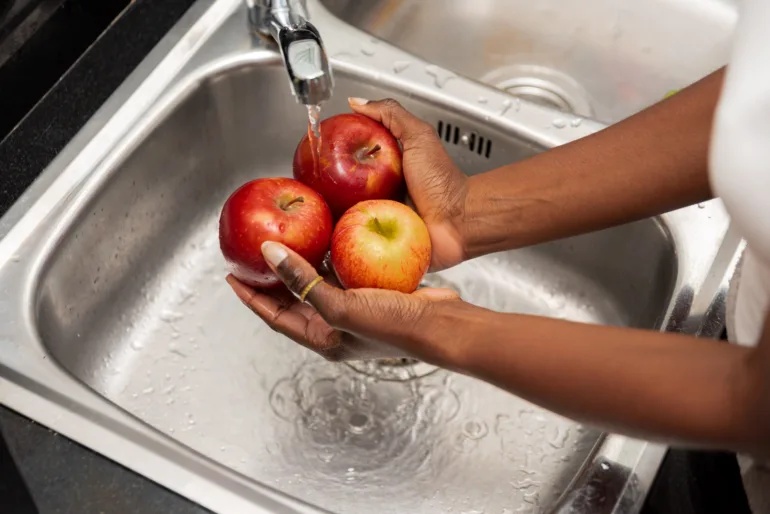Have you ever wondered how many pesticides are hidden in those beautiful, shiny apples you see on store shelves? Although they look fresh and inviting, most commercially grown fruits are covered in a layer of wax and often pesticides that remain on the surface for a long time. Of course, these chemical residues are not visible to the naked eye, but there is a simple trick to reveal them right at home.
By pouring hot water over the apples, you can quickly check whether they have been treated with pesticides. If you notice a coating or slight cloudiness on the surface, you have most likely found traces of wax, which often serves to preserve freshness, but also traps unwanted pesticides. Treat yourself to a clean meal with natural cleaning methods - you will no doubt be surprised how much is hidden behind these seemingly perfect fruits!

How to identify pesticides and wax on apples
Although pesticides keep fruits protected from pests, their residues on fruits can endanger our health, especially with regular consumption. In the store, we often see how apples are coated with a thin layer of wax - this gives the fruit an attractive shine and protects it from drying out. But this shine hides more than we think: along with the wax, the fruit can also trap pesticide residues. Therefore, natural ways of removing these substances are a key step towards safer consumption of fresh produce.
A simple hot water trick
One of the most effective ways to check for wax and pesticides is to use hot water. When hot water is poured over an apple, if wax is present, the surface of the fruit will become cloudy or particles will begin to appear on top of the water - these indicate the presence of coatings that also trap pesticides. You can also do this method by soaking the apples in hot water for a few seconds. After this test, we recommend additional cleaning.

Natural methods for cleaning fruit
Hot water is the first step, but apples can be cleaned even more thoroughly using a natural solution from baking soda and lemon juice. Prepare a mixture of one liter of water, a teaspoon of baking soda and a few drops of fresh lemon juice. Brush the apples well with this solution, as the soda and lemon acid will effectively remove pesticide and wax residue. After cleaning the apples, rinse them under cold water and dry them with a cloth.

Health comes first
Our safety when eating fruit is not only ensured by washing the fruit well - it is a holistic approach to the conscious consumption of freshly grown food. By regularly cleaning fruit, we reduce the intake of potentially harmful substances into our bodies, which is especially important for children and the elderly. With simple methods, we can ensure safer eating ourselves and enjoy fruit without unnecessary worries.






